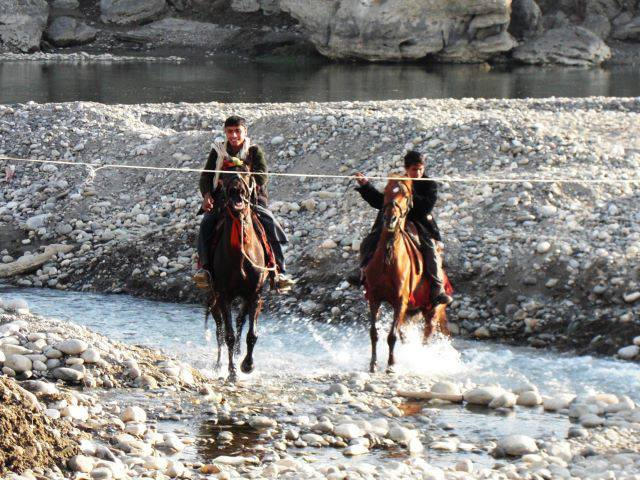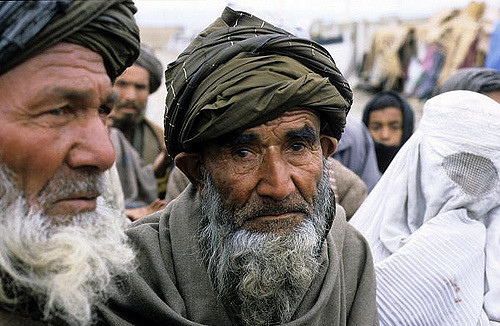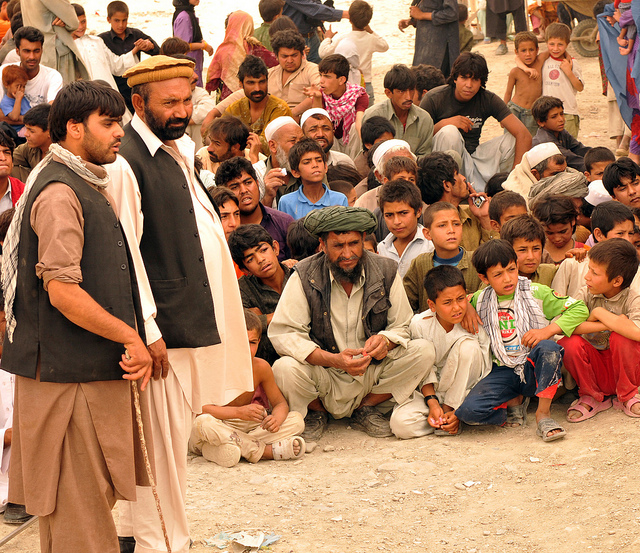Abdul Ghaffar Khan is a forgotten hero. This is to Pakistan’s detriment, as its perspective is saturated with praises of Muhammad Ali Jinnah, but scarcely pays respect to Khan, and the frontier political movements he helped create. Of course, the anti-colonialist’s absence from the historical record is purposeful. If Pakistanis were to fully grapple with the philosophy of his movement, they’d challenge mainstream political conventions in a manner unsustainable to the status-quo.
Ghaffar Khan was born in Peshawar sometime in 1890 to a wealthy family. After a deeply introspective and spiritual adolescence, he was unable to seek advanced education out of respect for his mother’s wishes that he not leave for London. Instead, Ghaffar Khan was influenced by associates who advised him to improve life in the Northwestern Frontier Province. Due to its geostrategic significance, the British Raj regarded the area as a military asset foremost. This meant that local reforms were delayed and often limited, reinforcing its perceived “backwardness” relative to the rest of India, as security concerns trumped everything else. Khan joined a generation of activists who sought to overcome these limitations, engaging in political efforts that were intensely local in their outlook.
The activist initially chose to concentrate on education, and opened a free public school in Utmanzai, followed by others throughout the province. A devout Muslim, Ghaffar Khan balanced a curriculum of English, mathematics, and skilled trades, with Islamic studies. This initial success propelled him into a community of progressive frontier thinkers and activists, such as Ubaidullah Sindh. During this period, Ghaffar Khan began formulating an opposition to British imperial rule, the repression of fundamentalist mullahs, and the more violent aspects of Pashtun culture. He would come to embrace non-violent resistance as the means to combat these alleged hurdles to Pashtun independence. Throughout the 1910s, Khan would deepen his pacifist readings of Islam and the Pashtunwali code of honor in order to root mass resistance in an ethno-religious character, and became determined to organize the province’s population for social change.
Ghaffar Khan would become a political figure with his first act of anti-British resistance at the end of 1919 in conjunction with the wider Khilafat Movement, and was jailed for six months. This was the same year that he began a close alliance and friendship with Mahatma Gandhi, coming to endorse the idea of a united India with a secular vision and limited central authority. He saw these circumstances as the best arrangement for the Pashtun community, and founded several reform movements soon thereafter. These included the Anjuman-e-Islah-ul-Afghan (“Society for the Reformation of Afghans”) in 1921, and the feudal peasant organization Anjuman-e-Zamidaran in 1927. He also spearheaded the appropriately-named magazine Pashtun in May 1928, seeking to promote Pashto language and culture as part of a nationalist push. While organizing these reform movements, Ghaffar Khan was given the nickname Bacha Khan (“the King of Chiefs.”) After their success, Khan formed what would become the largest and most successful organization, the Khudai Khidmatgars (“Servants of God.”)

The Khudai Khidmatgars was founded in 1929 as a sister organization to Mian Akbar Shah’s Zalmo Jirgah, which was built on a model of youth leagues such as the Young Turks. Ghaffar Khan designed the group to attract older and illiterate members, in addition to other groups. Initially having a membership in the hundreds, the organization eventually swelled to over a hundred thousand after vicious crackdowns by the Raj. Its diverse political platform promoted Pashtun nationalism, as well as Islamic nonviolent resistance to British imperialism, an opposition to sectarianism and tribal violence (particularly blood feuds,) land reform, women’s rights, mandatory community service, an emphasis on local production, and a refusal to interact significantly with official institutions such as the military. When examined in light of the group’s emphasis on community governance, and extreme caution regarding central authority, one is left with an impression of a tribal-driven form of anarchism.
The organization’s members were also taught to abstain from earthly vices, such as intoxicants, and highly disciplined through militarized mechanisms that initially seem paradoxical to its non-violent outlook. These included mandatory chants and slogans, military ranks, and reddish-brown uniforms (in order to allow impoverished frontier members to simply dip existing clothes in cheap henna coloring.) The colored uniforms, and efforts to smear the movement by associating it with the Bolsheviks, immediately led to the movement being called “the Red Shirts” in British military communiqués.
The Khudai Khidmatgars quickly gained traction in provincial politics, and by March 1930, was influential enough that it could begin widespread nonviolent resistance. The British were skeptical of the movement, believing that the phrase ‘nonviolent Pashtuns’ was an oxymoron, as made clear in a 1930 report that stated “the brutes must be ruled brutally, and by brutes.” Regarding the Red Shirts as a Communist cell, authorities responded with some of the harshest violence of the era. The resulting crackdown included mass arrests, indefinite detention, the destruction of homes and fields, torture, castration, and numerous mass killings. The largest massacre occurred on 23 April 1930, when at least 200 members of the organization were killed by the Ganwal Rifles during an all-day procession where demonstrators who marched in solidarity with the Salt March offered themselves to the squadron. When the police regiment finally refused to continue, it was severely punished by imperial authorities. Ghaffar Khan himself spent much of this year, and indeed the following two decades, in solitary confinement.
Although the crackdown officially ended with the Gandhi-Irwin Pact in March 1931, which released Khan, along with Congress Party prisoners, British violence in the province was more or less consistent. The Raj even went so far as to declare the province to be an artillery training ground, shelling it with the approval of British courts. This failed to crush the movement, which was led in its political wing by Dr. Khan Sahib (Ghaffar Khan’s brother) who became Chief Minister of the province until his dismissal by Muhammad Ali Jinnah in 1947.

Violence and civil unrest continued in wider India throughout the 1930s and 1940s, which finally led to the 1946 Cabinet Mission to India that sought to solve the problem of how political power would be transferred to Indian control. Among its issued recommendations were of provincial groupings that would have separate authority, with the NWFP being placed in a group with Sindh, and majority-Muslim areas of the Punjab. The Khudai Khidmatgars immediately objected to the plan, reading it as perpetuating divisions between Hindus and Muslims, as well as locking the NWFP into a permanently subordinate role to the Punjab. Ghaffar Khan saw the emerging possibility of partition as being violently unstable, stating that “India is one single nation inhabited by Hindus and Muslims. There are provinces where Hindus are an insignificant minority. There are some other provinces where Muslims are similarly situated. If what has happened in Noakhali and Bihar is repeated in other places, the fate of the nation is surely sealed.”
After the autumn riots of 1946 destroyed the possibility of a peace settlement between Indian religious sects, Khan and the Khudai Khidmatgars began to face partition as a stronger possibility. As with other parts of the collapsing Raj, the violence had pushed Muslim populations in the province towards a predominantly Muslim nationalism rather than a Pashtun one. This led to a growth in support for the competing Frontier Muslim League, which supported partition, and with it an energized zeal for the idea of Pakistan as a Zion for Indian Muslims. The Khudai Khidmatgars attempted to adapt by forcing an option for independent Pashtunistan in the provincial vote over partition, but was refused when the ballot options were finalized as being a choice between annexation by Pakistan, or India. While Ghaffar Khan sought assurances that the movement would not be decimated by Indian rule, it ultimately decided to boycott the vote, and on August 14th, 1947, the NWFP was carved into the new state of Pakistan. Khan’s heartbreaking last words to his formerly close friend and associate Gandhi are reported to have been, “you have thrown us to the wolves.”
Despite an initially warm relationship with Governor-General Jinnah, Ghaffar Khan was once again arrested. During his imprisonment, the Khudai Khidmatagars were banned in Pakistan. Once released, Ghaffar Khan helped form the Azad Party, which eventually fused into an initially Bengali-led socialist alliance called the National Awami Party in 1956. Khan would be imprisoned throughout the 1950s and 1960s for his opposition to the 1954 One Unit policy that centralized state control in West Pakistan. An attempt to invite him into institutional politics as a minister, and turn the Khudai Khidmatagars into a national organization, was rejected during this period, and Ghaffar Khan eventually went into a period of self-exile in Afghanistan.
He returned to Pakistan in 1972, by which time his son Abdul Wali Khan was in control of a split National Awami Party. Although the ban on the Red Shirts had been lifted that same year, the organization had been effectively destroyed. Ghaffar Khan mostly retired from political life, with the exceptions of condemning the rule of Zulfikar Ali Bhutto, and voicing his opposition to the proposed Kalabagh Dam project in 1985 (which was halted after his death out of respect.) Khan died in Peshawar on 20 January 1988. His funeral procession extended from the city to his burial site in Jalalabad, Afghanistan, with hundreds of thousands of attendees. And while his death was met with five days of national mourning in India, it was not discussed on nearly the same scale in Pakistan.

Apart from being painfully sad, Ghaffar Khan’s later years were marked by an unforgivable erasure from the Pakistani national consciousness. His lack of discussion in Pakistani historiography is sometimes justified by the fact that he did not publish a significant amount of written work, and also never spent a prolonged period of time in the West. This distinguishes him from the much more discussed Gandhi, to whom he is often unfairly treated as a minor adjunct, with the nickname “Frontier Gandhi” erasing his own independent philosophy and social organizing. Most often, though, it is argued that Khan shouldn’t be (or simply isn’t) discussed in Pakistan because he is a Pashtun nationalist who opposed the country’s very creation.
This is foolish for two reasons. One is that Ghaffar Khan’s philosophy is more important for Pashtun populations, and those interacting with them, than ever. During a period when the Pashtun tribal roots are seen as permanently fused with the Taliban-led insurgency, Khan’s teachings about a progressive form of tribal Islam that emphasizes a reinterpretations of Islam and tribal honor are a stark reminder that these movements do not represent the totality of Pashtun society. They required fierce state-backing by a variety of actors in order to become the political force that they are today, and could easily become erased by a revival of Ghaffar Khan’s left-wing attitudes in a generation of young people that has never been educated about him. Globally, Ghaffar Khan could be hailed as a model for increasingly entrenched Muslim populations that are desperate to counter Islamophobic claims that Islam is an inherently violent religion. Ironically, he also had these struggles when distancing himself from Haji Sahib’s vision of religiously-inspired armed struggle, arguing for his own models of non-violence. It’s astonishing that Khan’s contributions to Muslim philosophy and politics are continuing to be silenced exactly when they are needed most.
Second is that the idea of partition having been a mistake has been discussed behind closed doors in Pakistan for years now. As our national situation deteriorates, many Pakistanis are critically examining the propaganda we have always been taught about how our country was created as a paradisaical haven for persecuted Muslims in South Asia. Part of the reason that people do not feel comfortable to say this in public is because Pakistan’s national mythology does not facilitate healthy discussions about Jinnah’s Muslim political opponents who hated the idea of dividing the Raj from the start. It wasn’t just Ghaffar Khan, and the Khudai Khidmitgars. It was a variety of actors, including many leftists, who found themselves drowned out by a chorus of Muslim nationalism that, at once, made dissent akin to treason, and treason akin to blasphemy.
Ultimately, though, Pakistan cannot survive until these voices are heard, especially in cases like that of Khan, where the main insecurity was with premonitions of Punjabi-dominated state violence that, more-or-less, ended up being proven true. Many of their fears have come to fruition, and as such, need to finally be addressed. The only alternative is to further propagate a crackdown on substantive dissent that has been an unfortunate part of our history since the very beginning.
Photographs courtesy of ISAF Media. Published under a Creative Commons License.





